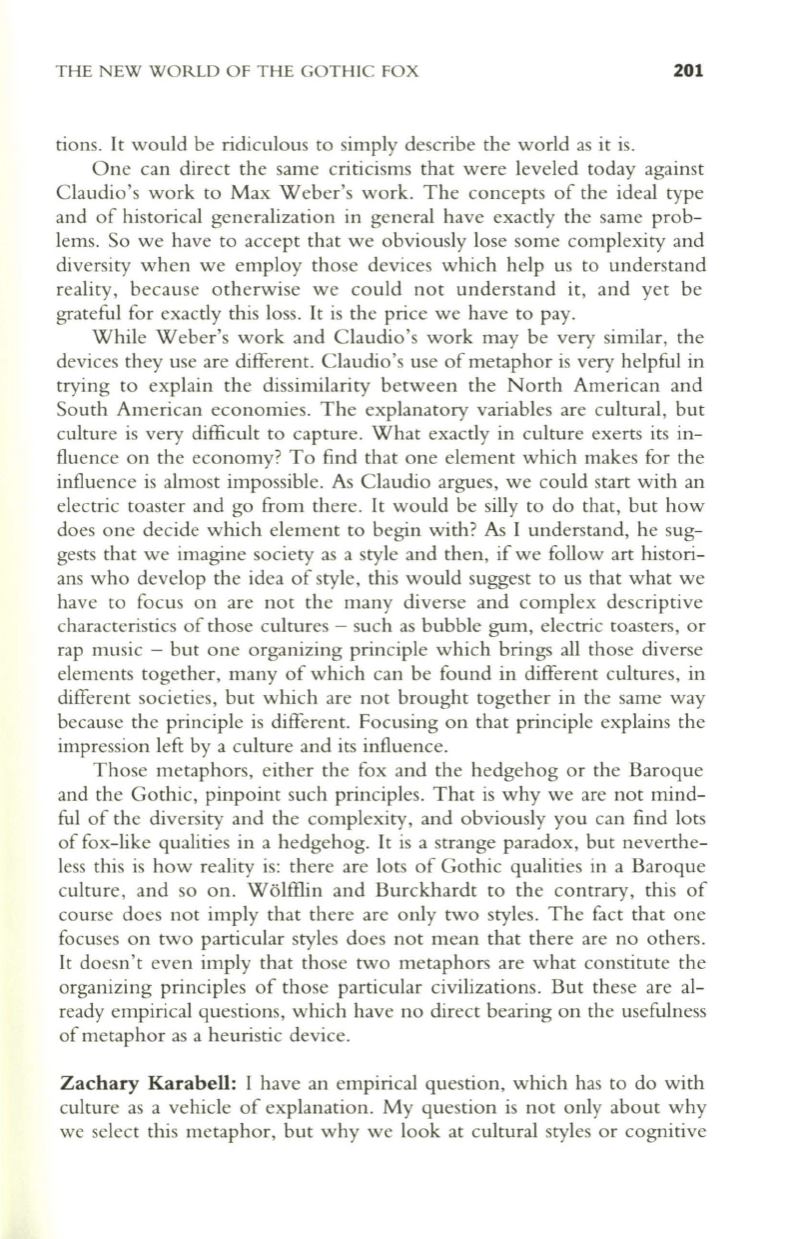
THE NEW WORLD OF THE GOTHIC FOX
201
tions. It would be ridiculous to simply describe the world as it is.
One can direct the same criticisms that were leveled today against
Claudio's work to Max Weber's work. The concepts of the ideal type
and of historical generalization in general have exactly the same prob–
lems. So we have to accept that we obviously lose some complexity and
diversity when we employ those devices which help us to understand
reality, because otherwise we could not understand it, and yet be
grateful for exactly this loss. It is the price we have to pay.
While Weber's work and Claudio's work may be very similar, the
devices they use are different. Claudio's use of metaphor is very helpful in
trying to explain the dissimilarity between the North American and
South American economies. The explanatory variables are cultural, but
culture is very difficult to capture. What exactly in culture exerts its in–
fluence on the economy? To find that one element which makes for the
influence is almost impossible. As Claudio argues, we could start with an
electric toaster and go from there. It would be silly to do that, but how
does one decide which element to begin with? As I understand, he sug–
gests that we imagine society as a style and then, if we follow art histori–
ans who develop the idea of style, this would suggest to us that what we
have to focus on are not the many diverse and complex descriptive
characteristics of those cultures - such as bubble gum, electric toasters, or
rap music - but one organizing principle which brings all those diverse
elements together, many of which can be found in different cultures, in
different societies, but which are not brought together in the same way
because the principle is different. Focusing on that principle explains the
impression left by a culture and its influence .
Those metaphors, either the fox and the hedgehog or the Baroque
and the Gothic, pinpoint such principles. That is why we are not mind–
ful of the diversity and the complexity, and obviously you can find lots
of fox-like qualities in a hedgehog. It is a strange paradox, but neverthe–
less this is how reality is: there are lots of Gothic qualities in a Baroque
culture, and so on. Wolffiin and Burckhardt to the contrary, this of
course does not imply that there are only two styles. The fact that one
focuses on two particular styles does not mean that there are no others.
It doesn't even imply that those two metaphors are what constitute the
organizing principles of those particular civilizations. But these are al–
ready empirical questions, which have no direct bearing on the usefulness
of metaphor as a heuristic device .
Zachary Karabell: I
have an empirical question, which has to do with
culture as a vehicle of explanation. My question is not only about why
we select this metaphor, but why we look at cultural styles or cognitive


